Privacy Policy | Terms and Conditions | Disclosure Statement | License Policy
COPYRIGHT © 2024 | NUMBER 8 COOKING | ALL RIGHTS RESERVED.

Privacy Policy | Terms and Conditions | Disclosure Statement | License Policy
COPYRIGHT © 2024 | NUMBER 8 COOKING | ALL RIGHTS RESERVED.

Privacy Policy | Terms and Conditions | Disclosure Statement | License Policy
COPYRIGHT © 2024 | NUMBER 8 COOKING | ALL RIGHTS RESERVED.
We’re going to share with you our 18 simple cooking tips for turning food scraps into culinary gold. There is one thing that disappoints me. It is seeing food scraps going to waste.
When I was young, I was taught how to use food scraps. When I became a chef, my skill of turning food scraps into culinary gold only became more refined.
We have always strived to make the most of every ingredient we use. So, we’ve gathered our 18 zero waste simple cooking tips. That not only helps you create delicious dishes.
Also saves you from the guilt when you toss out good scraps. That can be repurposed into something amazingly tasty. Let’s dive into these practical tips that can reduce your waste and save you money. This is eco-friendly cooking 101.
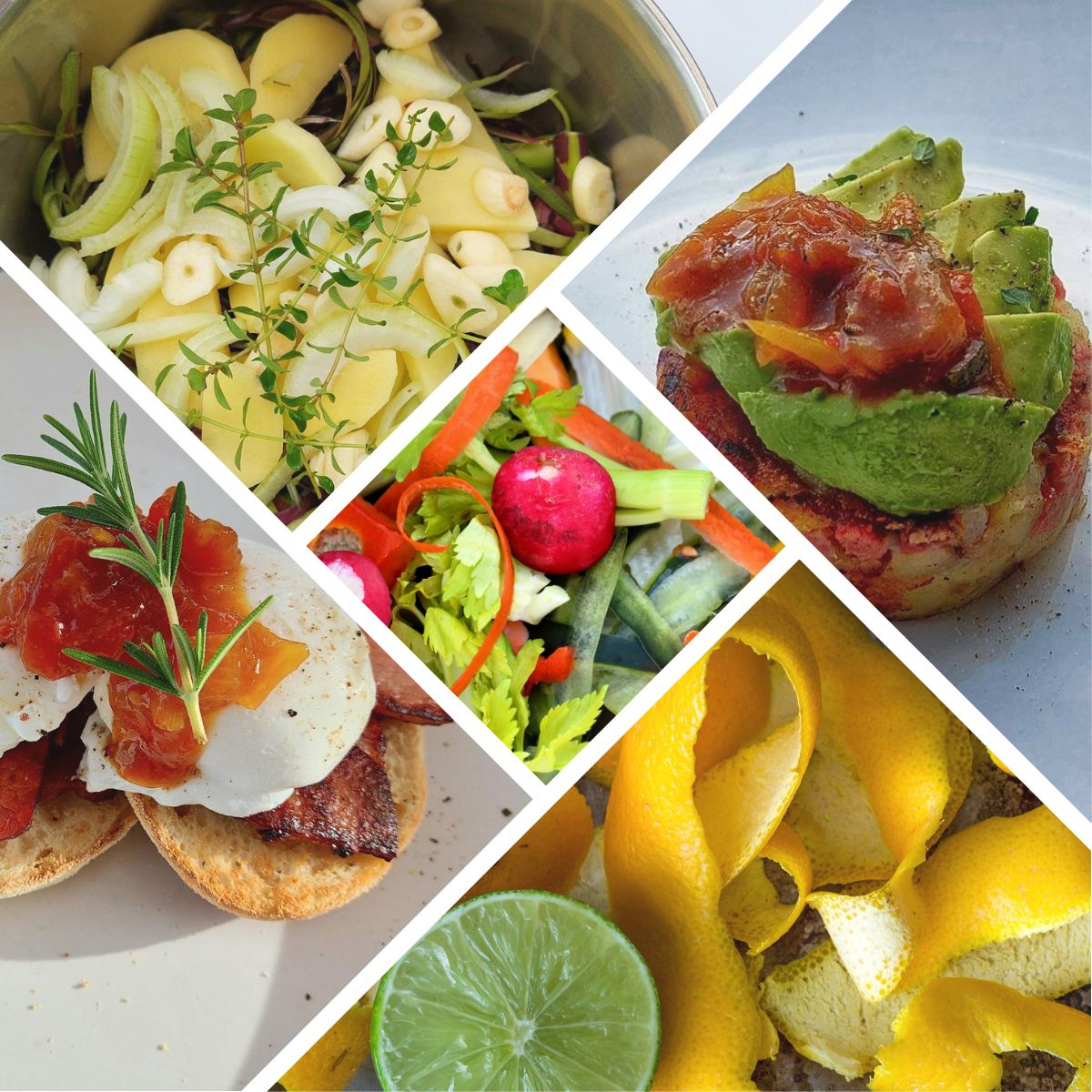
You’re in the midst of prepping for your next culinary masterpiece. You’re focused on extracting the very essence of flavor from each ingredient. But wait, you’re unknowingly discarding potential culinary gold. Every part of each ingredient has its unique taste and potential. With some simple cooking tips, you can turn those scraps into something wonderfully delicious.
When we talk about root-to-leaf cooking, we’re essentially talking about utilizing the entire vegetable. From its roots to its leafy tops and everything in between. It’s a practice that not only minimizes waste. It also adds taste and texture to your dishes.
So, when you’re working with vegetables, don’t stop at the pretty parts. Utilize stalks, stems, peelings, and tops. To make stocks, soups, and flavorful delights.
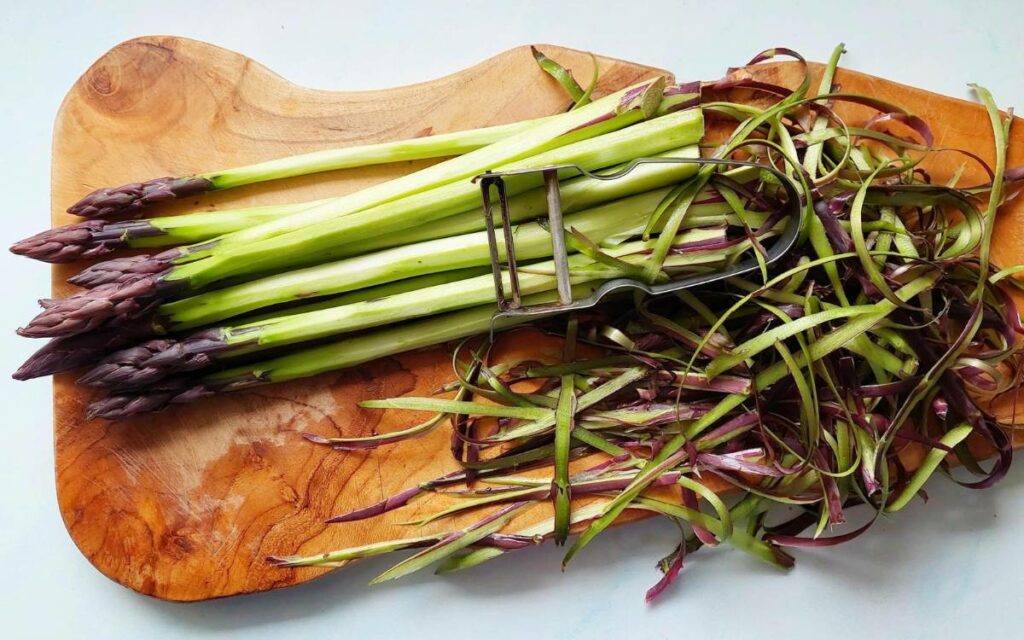
Vegetable stems and stalks are often relegated to the compost bin. They can add a delightful crunch and flavor to your dishes. Take cauliflower and broccoli, for instance. While the florets usually steal the show, the tender stems are equally delicious. Thinly slice them and toss them into stir-fries. Or grate them into salads for an added layer of texture.
The leafy tops of vegetables like carrots, beets, and radishes are often dismissed. However, they carry a unique charm. These tops can be sautéed, or used to make exciting pestos. Even added to salads or soups for a fresh and earthy flavor. Don’t be surprised if these once-neglected parts become the star of your next dish! Simple cooking tips for zero waste.
One of the most rewarding aspects of root-to-leaf cooking is the ability to create rich and flavorful stocks. Collect all those valuable vegetable scrapes.
Simmer them in water, with bay leaves and peppercorns. Within no time, you’ll have a fragrant liquid that forms the base for soups, sauces, and stews. These homemade stocks not only taste better than store-bought ones. They also infuse your dishes with the unique essence of wholesome ingredients.
Chefs Pro Tip — We love using onion skins when making stock. They add a beautiful golden color to the stock. Vegetables that shouldn’t be used to make stocks, pumpkin, sweet potato, or potato peelings. This is because they will disintegrate. Making the stock cloudy and gritty.
The process of creating herb-infused oils and vinegar is as simple as it is transformative. We’re always incorporating fresh herbs into our cooking. Thyme, rosemary, sage, and mint are flourishing in our garden. When I’ve got any scrapes I make herb oils and vinegars. These are some simple cooking tips to make herb-infused oils and vinegars.
Collect your herb scraps—stalks, stems, and leaves. Choose a neutral oil such as pomace olive oil, rice bran oil, or canola oil. Wash the herbs and ensure they are thoroughly dried. Transfer the herbs into a mortar and pestle. Add sufficient oil to fully coat the herbs. Gently crush them using the mortar to unlock their aromatic essence.
Combine this mixture with the remaining oil. Let the blend steep, enabling the herbs to infuse their flavors into the oil. The result? A versatile condiment. That can be used to make vinaigrettes or mayonnaise. Also can be drizzled over salads, pasta, or grilled vegetables. Adding a burst of herbaceous freshness with every drop.
Place into the refrigerator in a jar or airtight container. This preservation method ensures that the herb-infused oil remains fresh for up to three months. Simple cooking tips to change the flavor of olive oil.
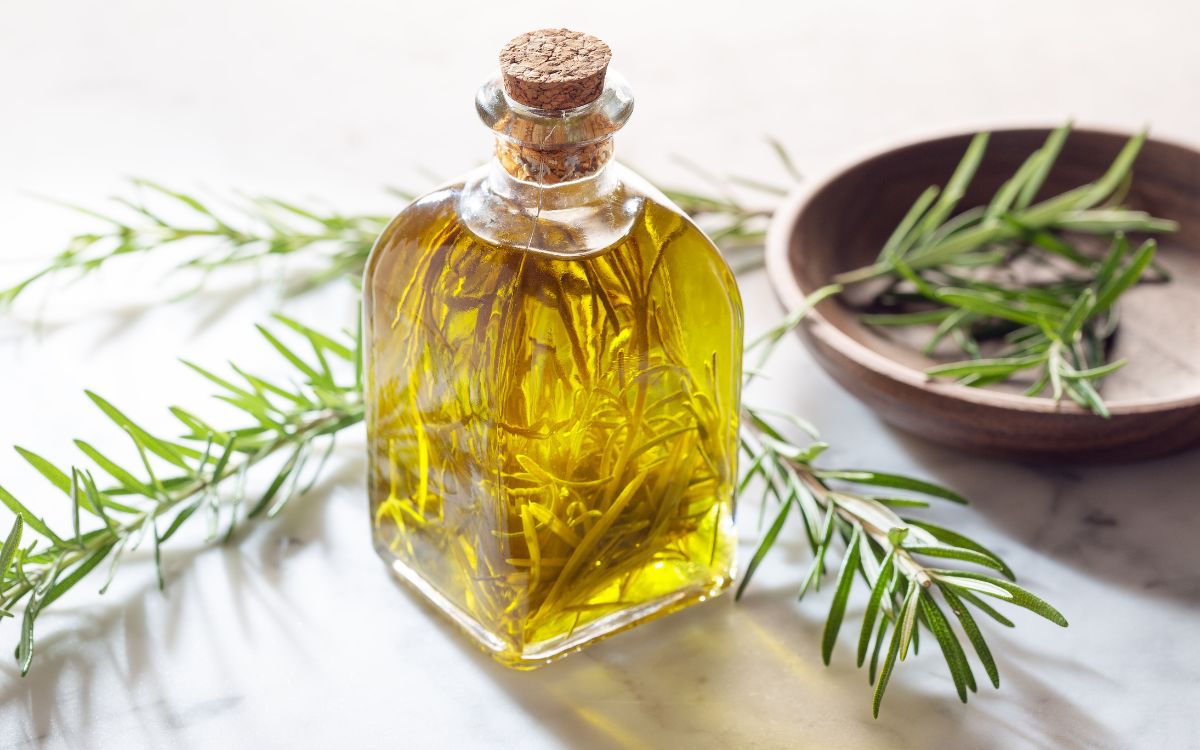
Herb-infused vinegar is very simple to make. Use a clear vinegar like white, white wine, champagne, or cider. Bring the vinegar to a boil in a stainless steel pot. Add in the herb scraps and remove from the heat. Cool to room temperature before decanting into jars. This can last in the refrigerator for years.
Root-to-leaf cooking isn’t just about saving on waste. It’s about enhancing your culinary creations. Imagine transforming leftover leek greens into a bouquet garni, imparting a delicate aroma to your sauces and soups. Simple cooking tips that work.
In the modern kitchen, efficiency, and sustainability meet creativity. The freezer emerges as a true ally in your culinary adventures, beyond its role in preserving perishables. The freezer becomes another storage choice. Where leftover herbs, sauces, overripe fruits, and even fresh spicy chilies can be frozen in time. These can be used in future dishes. They’re like little nuggets of flavor gold waiting to be rediscovered.
Fresh herbs can be fleeting. However, your freezer can bridge the gap between seasonal abundance and year-round delight. Chop basil, mint, parsley, or any herb of choice. Then pack the vibrant green goodness into ice cube trays. Cover them with water to preserve their color and vitality.
Drop these herbaceous ice cubes into sautés, stews, or sauces for instant aromatic infusion. Flavor your dishes with the essence of spring and summer, regardless of the season. Simple cooking tips that will change the way you prepare and cook.
Sauces, the silent heroes of many dishes. Often takes time to reach their peak flavor. Imagine having a carefully crafted marinara or velvety Velouté waiting for you. Perfectly portioned and ready to thaw whenever inspiration strikes. By freezing sauces, stews, or casseroles you not only prolong their lifespan. But also capture their essence at its peak. Guaranteeing consistently delicious results.
Chefs Pro Tip — Resist the urge to freeze dairy-based sauces. When defrosted they will split and break, turning your sauce into a sludgy lumpy mess.
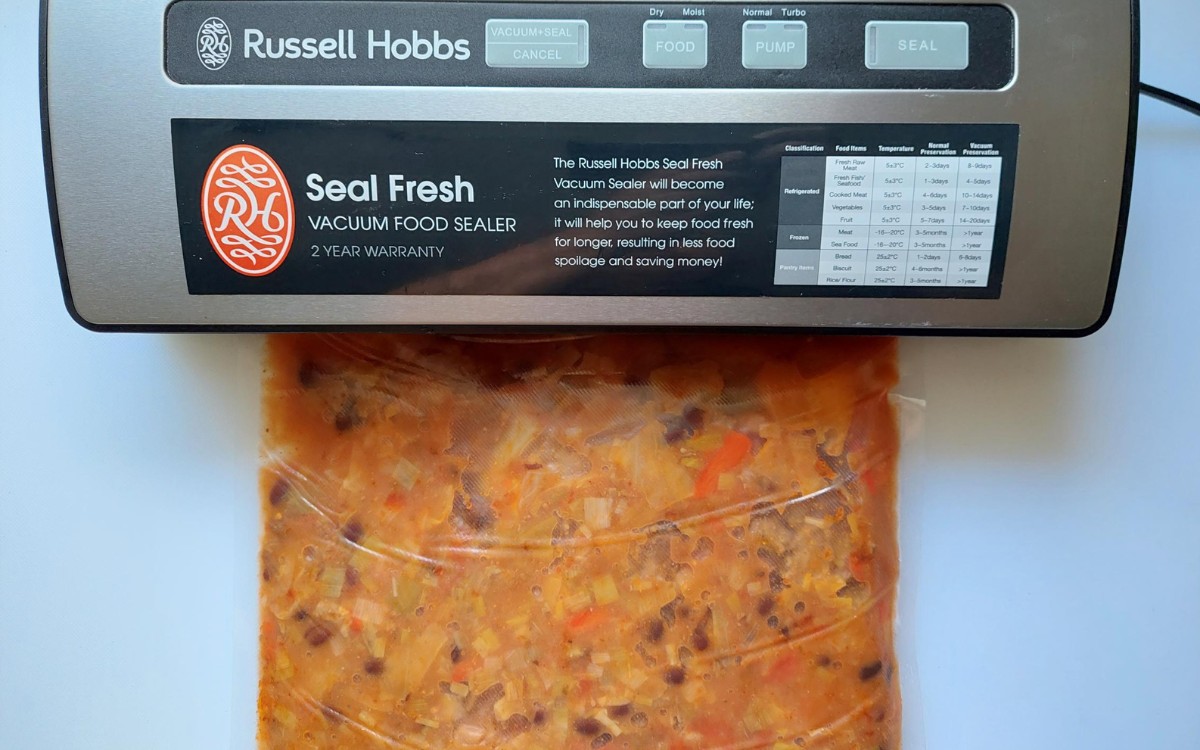
Overripe fruits may lose their initial look. However, their transformation in the freezer is nothing short of magical. Slice overripe bananas, berries, or stone fruits. Then freeze them on a baking sheet before transferring them to freezer bags.
These frozen fruity treasures can effortlessly star in smoothies and desserts. Or crown breakfast bowls with a burst of natural sweetness. Each bite becomes a testament to your resourcefulness and commitment to minimizing food waste.
By freezing leftover herbs, sauces, and overripe fruits. You’re not only prolonging their lifespan. Also expanding your repertoire of flavors and textures. So, embrace the freezer as your friend, your flavor ally.
When we talk about nose-to-tail cooking, we’re essentially talking about utilizing the entire ingredient. We’ve got simple cooking tips that can help you transform discarded ingredients into culinary gold.
Prawns, Lobsters, and Crayfish those succulent and delicate seafood delights. They hold within them a flavor encapsulated in their shells and heads. While the tender meat is undoubtedly the star of the show. The shells and heads contribute a depth that cannot be ignored. Simple cooking tips to extract the essence of crustaceans.
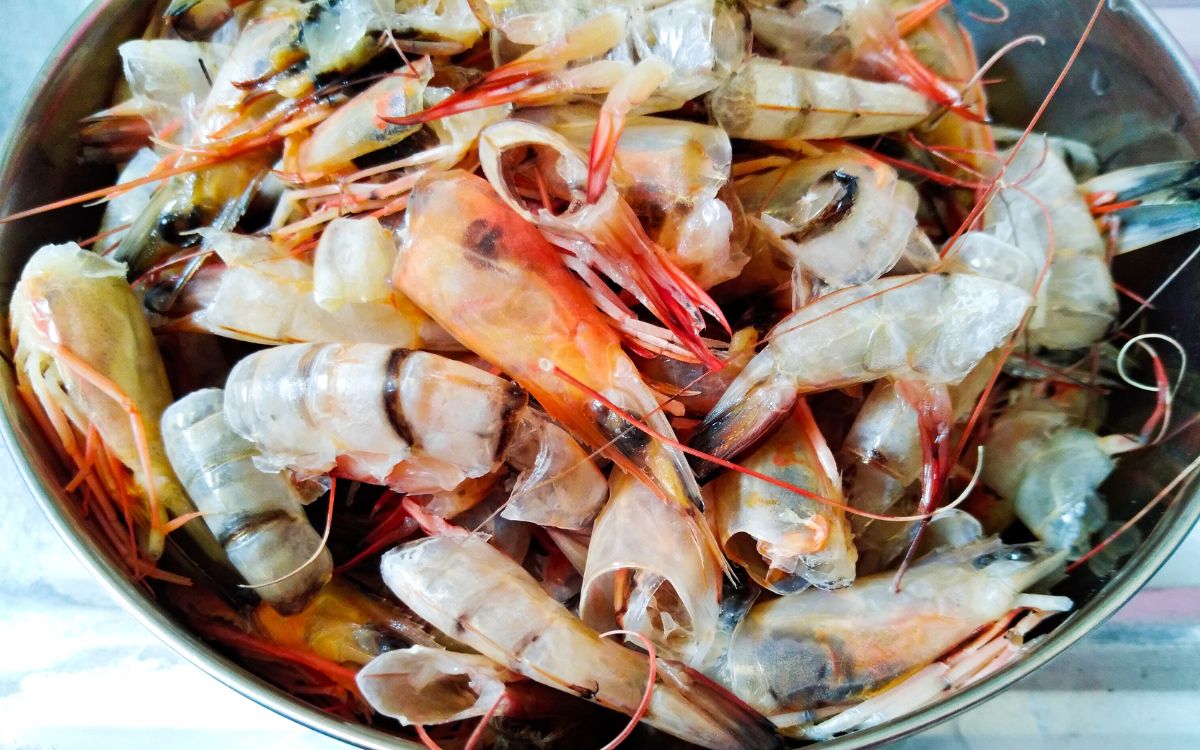
Chefs Pro Tip — As butter melts, it separates the fat from the solids. When it begins to cool and firm up, you can use a mixer equipped with a whisk attachment. Whip the butter for a few minutes, restoring it to its smooth and creamy consistency.
Using leftover bones in cooking is a culinary tradition that I follow. Harnessing a wealth of flavors, and nutrients, to create culinary magic. Whole fish, beef, lamb, pork, or chicken bones. Here are some simple cooking tips to embrace zero waste.
We usually cook with whole chickens. From roasting to braising, and everything in between. I can use all the whole chicken. Knuckles, and wing tips for making stock, leftover bones for bone broth. Any leftover meat can be repurposed into something exciting and new. The humble whole roast chicken offers a wide range of delicious possibilities.
Stale bread, often relegated to the back corners of pantries or destined for birds. Stale bread has an untapped potential. Within its seemingly lifeless form lies a world of culinary creativity. We’ve always embraced stale bread. Croutons, bread crumbs, bread, and butter pudding. Also makes amazing stuffing for poultry. Simple cooking tips for using stale bread can be transformed into gastronomic magic.
Simple cooking tips for stale bread’s journey toward culinary redemption. They begin with the humble crouton. Cut into squares, a simple toss in olive oil, or melted butter. A sprinkle of herbs and a grating of parmesan. This is all it takes to breathe new life into these cubes of possibility.
Toasted to perfection, croutons become golden nuggets of crunchiness. They’re ready to grace your next salad. Their transformation from lifeless to lively adds not only texture but also flavor. They can be stored in an air-tight container at room temp for 1-2 days.
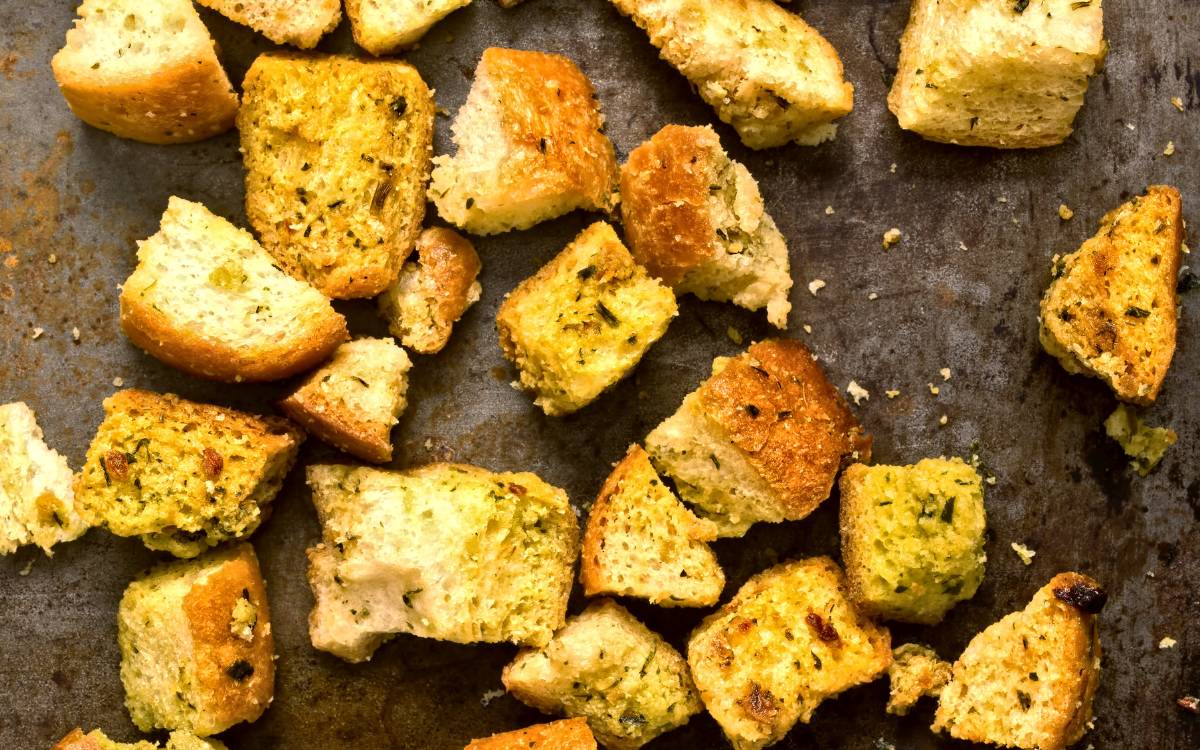
The transformation continues as stale bread embraces its destiny as breadcrumbs, through a whirlwind ride in the food processor. It takes on a new identity, ready-to-coat foods with its unique blend of texture and flavor.
Breadcrumbs, whether toasted for a subtle nuttiness or left untoasted for a soft, savory touch. Become a versatile ingredient. They are excellent as a coating for chicken breast fillets and pork schnitzel. To create a crispy crust when baked or fried.
Chefs Pro Tip — The ideal approach for making toasted breadcrumbs. First, begin with toasting the bread. This can be done by toasting it in a hot oven until crunchy. Afterward, pass it through a blender to transform it into finely crushed toasted crumbs.
In the realm of desserts. The transformation of stale bread reaches its peak with the creation of old-school bread and butter pudding.
This timeless creation involves layering bread with dried or frozen fruits. Combine an equal quantity of milk and cream. Infusing them with aromatic spices such as cinnamon or nutmeg and a touch of vanilla essence. Pour this fragrant mixture over the layered bread and bake until it’s delicious golden brown. To complete the experience, serve it with a side of homemade custard. Crazy easy simple cooking tips for creating an amazing dessert.
These simple cooking tips for creating poultry stuffing using stale bread are how we have always made bread stuffings. A culinary tradition that infuses your roast chicken with layers of flavor and texture. Begin by tearing the stale bread into small, uniform pieces. This ensures an even consistent texture throughout your stuffing.
Sautéed onions, and garlic, to form the aromatic base. Fresh herbs like sage, thyme, and rosemary add an aromatic complexity. That pairs beautifully with the poultry’s natural flavors. If you desire more texture and flavor, consider incorporating ingredients like grain mustard, dried fruits, or nuts.
As you assemble your stuffing, remember the essential components, moisture and binding. We use milk, however, you can use chicken or vegetable stock. For the binding agent, We use one egg. This helps hold everything together, so your stuffing doesn’t crumble apart.
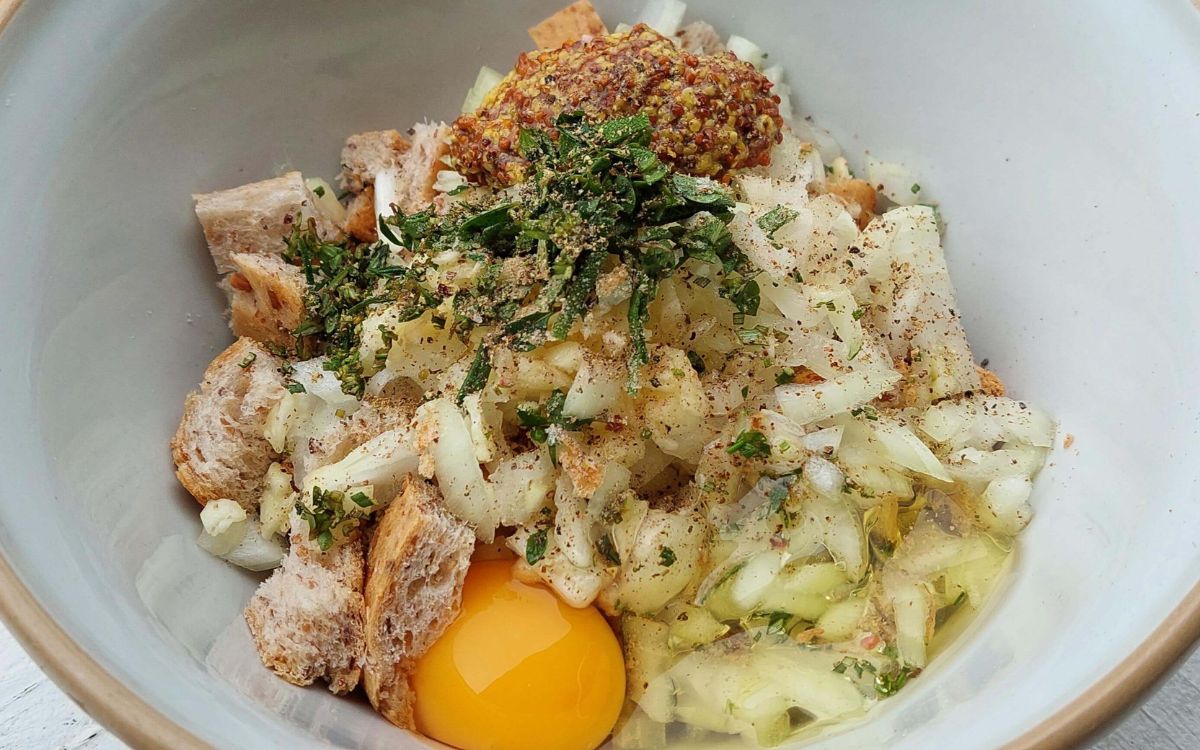
In the realm of culinary delights, citrus fruits emerge as one of my secret treasure troves. Concentrated flavor and aromatic potential. Often overlooked, it holds the power to elevate dishes to new heights. Citrus peelings, zest, and rinds simple cooking tips that work.
Before juicing citrus fruits, pause for a moment to zest. With a simple grater, zester, or Microplane gently zest the fruit’s vibrant skin. Releasing a symphony of aromas that dance through the air.
The outer layer, known as the zest, houses essential oils that encapsulate the fruit’s soul. This act of grating is a culinary ritual and the key to unlocking a world of complex flavors.
Citrus fruits lemons, limes, oranges, grapefruits, yuzu. The zest can be used to infuse marinades for chicken or fish. Can be mixed into cakes and muffins for an amazing zesty hit.
The zest’s intensity is a marvel in itself, but its potential stretches beyond immediate use. Freeze this golden essence for future culinary endeavors. You’ll have citrusy essence at your fingertips. By preserving the zest, you can have lemon zest all year round. Simple cooking tips with minimal effort.
When it comes to baking, citrus zest is a game-changer. A touch of lemon zest in a pound cake lends a bright, invigorating twist. While orange zest in cookies adds a layer of complexity. As you incorporate frozen citrus zest into your baking. You introduce a burst of natural fragrance that elevates your baking creations. Simple cooking tips when infusing zesty magic into your baking.
Lemon peelings can be repurposed into candied citrus peel. Or even made into marmalade. Orange peel can be thinly sliced and cooked down with water and sugar. Creating a sweet citrusy topping for chicken or duck. Simple cooking tips to supercharge your culinary creations.
Parmesan cheese is renowned for its sharp and nutty profile. Brings a touch of umami flavor to many dishes. Yet, as you grate away at the cheese, you’re left with the rind. This seemingly tough exterior harbors a wealth of flavor. Simple cooking tips to extract amazing flavors for scraps.
Yes, zero-waste cooking is possible. A sustainable approach to food preparation is a good start. Achieving absolute zero waste can be challenging. However, it’s certainly possible to significantly reduce food waste. Through mindful practices and creative strategies.
Utilize All Parts of Ingredients — Embrace nose-to-tail and root-to-leaf cooking, making the most of every part of an ingredient, from vegetable scraps to meat bones.
Preservation Techniques — Learn preservation methods like pickling and fermenting. Freezing will extend the shelf life of ingredients.
Leftovers Makeovers — Get creative with leftovers, turning them into new exciting dishes. Or incorporate them into future meals.
Meal Planning — Create meal plans that use ingredients efficiently. This can minimize food spoilage.
Kitchen scraps that can be transformed into culinary delights. They include vegetable peels for crisps, and herb stems for flavorful oils. Citrus peels for zest and infusions, and leftover bread for croutons or breadcrumbs.
These are just a few simple cooking tips for how minimal effort can turn seemingly discarded scraps into culinary gold.
Vegetable scraps, like carrot tops, broccoli stalks, and onion skins. These can be utilized to make homemade vegetable broth or stock. Simply simmer them in water with herbs and peppercorns to create a flavorful base. That can be used for soups, stews, and sauces, reducing waste and enhancing taste.
Cooking is a science and a skill that requires a deep understanding of both the technical and creative aspects. Cooking is also a matter of precise measurements and ratios.
For example, baking is particularly sensitive to accurate measurements and temperatures. A slight deviation in the amount of an ingredient or cooking degrees can result in a completely different outcome. So, to help you here is a handy little unit converter tool for cooking without guesswork.
These 18 simple cooking tips are more than just culinary tricks. They represent a zero waste approach to cooking. That transforms kitchen scraps into culinary gold. By minimizing waste and making the most of every ingredient. We discover new dimensions of flavor, texture, and creativity in the kitchen.
Zero waste cooking empowers us to use all parts of an ingredient. From root to leaf, nose to tail, and from rind to zest. It encourages us to embrace resourcefulness and experiment with preservation techniques. This is a chance to savor the rich and varied tastes that often go unnoticed.
With minimal effort, these simple cooking tips allow us to unlock the potential of kitchen scraps. Turning them into delicious and innovative dishes. Whether you’re using vegetable scraps for homemade broth. Repurposing bread into croutons, or infusing oils with herb stalks. Each step brings us closer to a more sustainable and flavorful kitchen.
So, let’s embark on this zero-waste culinary adventure. Respecting and appreciating the value of every ingredient. Relishing the joy of turning scraps into culinary treasures. It’s a rewarding journey that benefits our meals. Simple cooking tips that will reduce waste and save you money.